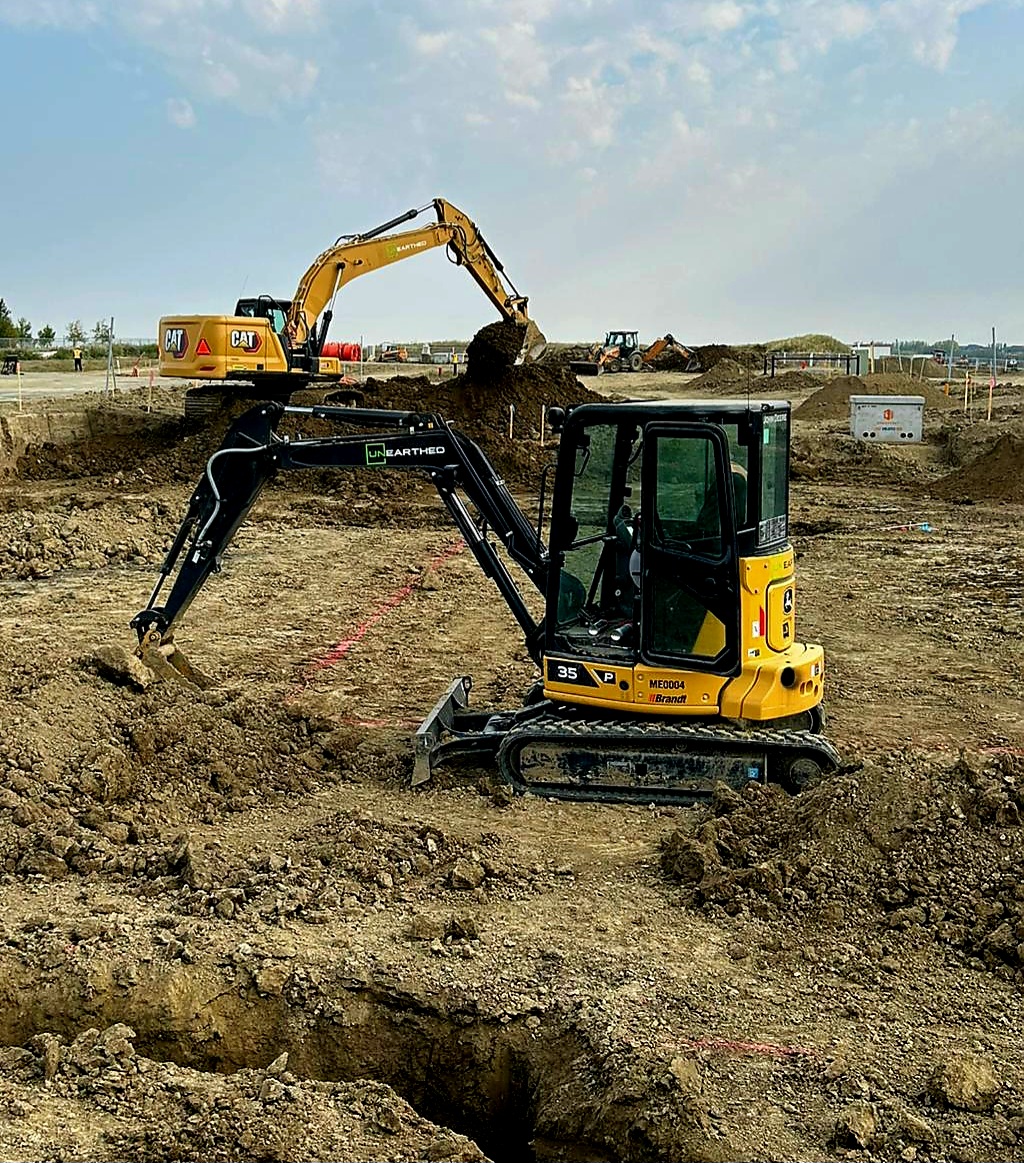
Katia Dejardin, HSE Manager, UnEarthed Excavation Ltd.
Ground disturbance is one of the highest risk activities in Alberta’s construction industry. Every year buried utilities such as gas lines, electrical cables, and water mains are struck due to poor planning or lack of communication. The result? Costly delays, serious injuries, and sometimes a very upset utility company. To protect workers, the public, and critical infrastructure, Alberta has strict legislative requirements and best practices that must be followed before any excavation begins.
Legislative Requirements
In Alberta, the Occupational Health and Safety Act, Regulation, and Code outline employer and worker responsibilities for safe excavation. Part 32 of the OHS Code requires that no ground disturbance take place until the location of all buried facilities has been determined and marked. Employers must also ensure that workers are trained in safe excavation practices and that hazard assessments are completed before work begins. Additionally, the Alberta Energy Regulator (AER) and the Damage Prevention Regulation under the Pipeline Act require contacting Utility Safety Partners before disturbing the ground near pipelines and utilities, click before you dig! (Yes, it’s the law - not just a polite suggestion.)
Pre-Excavation Processes
The Role of Communication
Clear communication is critical to safe excavation. Supervisors must review locate reports, excavation plans, and hazard assessments with all crew members before work starts. Tailgate meetings are a chance to check understanding, answer questions, and sometimes remind folks that “close enough” doesn’t apply to buried utilities. Coordination with utility owners, subcontractors, and regulators is also essential to avoid misunderstandings.
Tips for Safe Ground Disturbance
Conclusion
Pre-excavation planning and effective communication are not just legal requirements — they are essential safeguards for Alberta’s workers, communities, and infrastructure. With the right processes, construction teams can prevent incidents, protect lives, and keep projects moving forward without “explosive” surprises.
